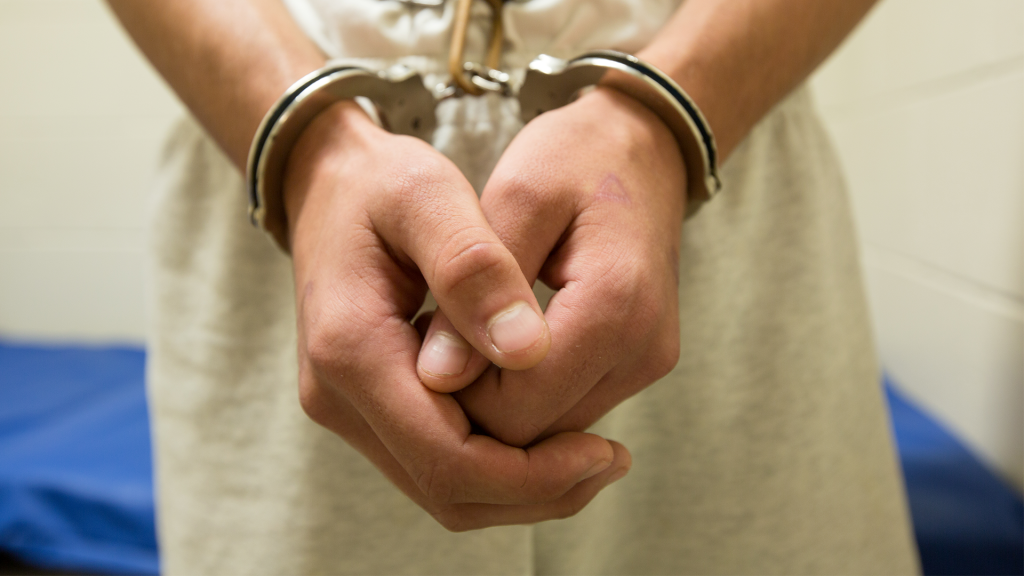Rethinking juvenile justice: Should kids face harsher penalties for crimes?

How far should society go in punishing young criminals? Recent cases have reignited the discussion over treating juveniles as adults and giving them harsher penalties for serious crimes.
For decades, juvenile justice reform has been a pendulum.
The pendulum swing: tough laws vs. reform
Three decades ago, society began viewing teens who committed violent crimes as a “new breed” of offenders. Media outlets and officials played a significant role in popularizing this narrative, with phrases like “super-predators” capturing public attention.
In the 1990s, as the Clinton administration sought to project a “tough-on-crime” stance, then-First Lady Hillary Clinton was on TV telling Americans, “They are often the kinds of kids that are called super predators, no conscience, no empathy.”
This language and accompanying efforts from President Bill Clinton’s administration resulted in laws that sent more juveniles to adult courtrooms.
Unbiased. Straight Facts.TM
Youth of color remain disproportionately represented in the juvenile justice system, a trend unchanged for over 50 years.

Then came a shift in perspective. Reform advocates, concerned about the consequences of harsh punishment, pushed for a more rehabilitative approach, arguing that prison could act as a “college for criminals.” Instead, these advocates argued, the focus should be on helping troubled youth, not just incarcerating them.
In recent years, the pendulum appears to be swinging back toward the idea of harsher consequences.
Amy Borror, a senior youth policy strategist at the Gault Center, told Straight Arrow News that she’s seeing a “resurgence” in the stricter rhetoric shaping today’s debate over juvenile offenders. She said she has noted a return to the narrative of the so-called “super predator” and the idea that “there’s something wrong with kids.”
The push now — as it was in the ’90s — is, “We need to punish them,” she said.
As the debate continues, juvenile justice advocates call for more community-based programming. And some, like Borror, say society needs to address the broader environment around a child.
Race and the juvenile justice system: a decades-old issue
Race continues to play a critical role in the juvenile justice system, with racial disparities still evident in detention rates and sentencing outcomes. According to Marsha Levick, co-founder and chief legal officer of the Juvenile Law Center, these disparities persist despite decades of reform efforts.
Levick said when it comes to juvenile detention centers or other facilities, the demographics look unchanged. “It was largely populated by black and brown children 50 years ago. It’s still largely populated by black and brown children,” she said. Levick further emphasized that communities of color often face heavier police presence, which leads to more arrests and, frequently, more severe consequences.
One of the common debate points in the discussion of systemic racial disparities is that minorities are disproportionately represented in detention rates because they commit a disproportionate share of the crimes. Others claim that over-policing in these communities leads to higher rates of arrest.
Changing trends in juvenile crime and punishment
Recent legislative proposals in states like Louisiana and North Carolina have reflected this shift toward stricter penalties for young offenders. Louisiana, known for its tough-on-crime policies, passed a law in 2023 that treats 17-year-olds accused of crimes as adults. However, voters rejected a 2025 referendum that aimed to expand the law even further, with a two-to-one margin opposing the measure. The proposal would have given state lawmakers broader authority to decide which crimes could result in juveniles being charged as adults.
In North Carolina, Republicans passed legislation in 2024 that targets 16- and 17-year-olds committing serious felonies. The lawmakers cited a 2% rise in violent crime and a 10% increase in property crime as reasons for the new policies. Democratic Gov. Roy Cooper tried to block the measure with a veto, but state lawmakers overrode it, allowing the bill to become law.
Unbiased. Straight Facts.TM
Juvenile firearm-related offenses rose by 21% between 2016 and 2022.

Although there has been a nationwide decline in youth arrests since the 1990s, certain crime categories show increases. For example, in 2020, juvenile crime led to nearly 425,000 detainments, with homicide offenses rising by about 65%.
Kim Hawekotte, deputy county administrator over juvenile justice in Omaha, noted an uptick in serious felony charges against juveniles following the COVID-19 pandemic, as the number of youth charged with class one or two felonies increases.
“When I look back two years, I maybe would have 20 to 25 youth in our community charged in the adult system for a class one or two felony,” Hawekotte told Straight Arrow News. “I can tell you, as of today, I have 42, so those numbers have increased.”
Data from the FBI’s National Incident-Based Reporting System also shows a mixed picture. While total juvenile offenses decreased by 14% between 2016 and 2022, the use of firearms by juveniles rose 21%. The data also reveals that younger children, between the ages of 10 and 14, are responsible for a growing share of juvenile offenses.
Youth incarceration has followed a similar downward trend. The number of young people held in juvenile justice facilities dropped by 75% between 2000 and 2022.
Experts like Hawekotte, who has worked in juvenile justice for over 30 years, believe that community programs focused on rehabilitation can help keep young offenders out of the system. “You have to really figure out if the juvenile’s actions were impulsive or part of a larger pattern of criminal behavior,” she said.
How has the Supreme Court changed juvenile justice systems?
The Supreme Court has played a significant role in shaping the juvenile justice system over the years. Landmark cases like Roper v. Simmons in 2005, which ruled that the death penalty cannot be imposed on anyone under 18, have helped shape policies that reflect current understanding of adolescent brain development.
“Anytime a youth enters a detention facility, their brain stops developing,” Hawekotte explained.“When you take a 13-year-old and charge them with a serious crime, they remain at that developmental level for the duration of their detention.”
Unbiased. Straight Facts.TM
Juvenile detentions dropped 75% from 2000 to 2022.

Even before Roper v. Simmons, years of court dockets shaped the juvenile justice system. The first juvenile court in the United States was established in 1899 in Chicago. As of 2025, juvenile justice systems operate in all 50 states.
In 1966, the U.S. Supreme Court ruled that juveniles are entitled to due process before they can be transferred to adult prison. The following year, the court expanded those protections, affirming that youth accused of crimes have the right to legal counsel and to confront witnesses.
Still, advocacy groups say the system falls short. As recently as 2017, some juveniles continued to appear in court without legal representation.
Gangs recruiting juveniles
Law enforcement agencies around the U.S. have reported that young people are increasingly targeted by gangs to commit crimes, in part because they believe the justice system will treat minors more leniently.
The National Crime Prevention Council revealed that public schools are sometimes used as recruitment grounds. According to the council’s website: “They may recruit children as young as nine, knowing that the judicial system is more lenient on younger children and that, thus, younger members can be sacrificed on riskier jobs for the gang.”
Data from the National Gang Center, which provides the most recent available data on youth gang involvement, points to a different trend. It reported that the proportion of gang members under age 18 fell from 50% in 1996 to 35% by 2011.
Where does juvenile justice reform go from here?
As the debate over juvenile justice continues, experts stress the importance of considering both accountability and rehabilitation. Each statistic represents a real story, and each juvenile involved in the justice system is part of a broader societal conversation about how to address youth crime and create a system that offers both consequences and opportunities for growth.





